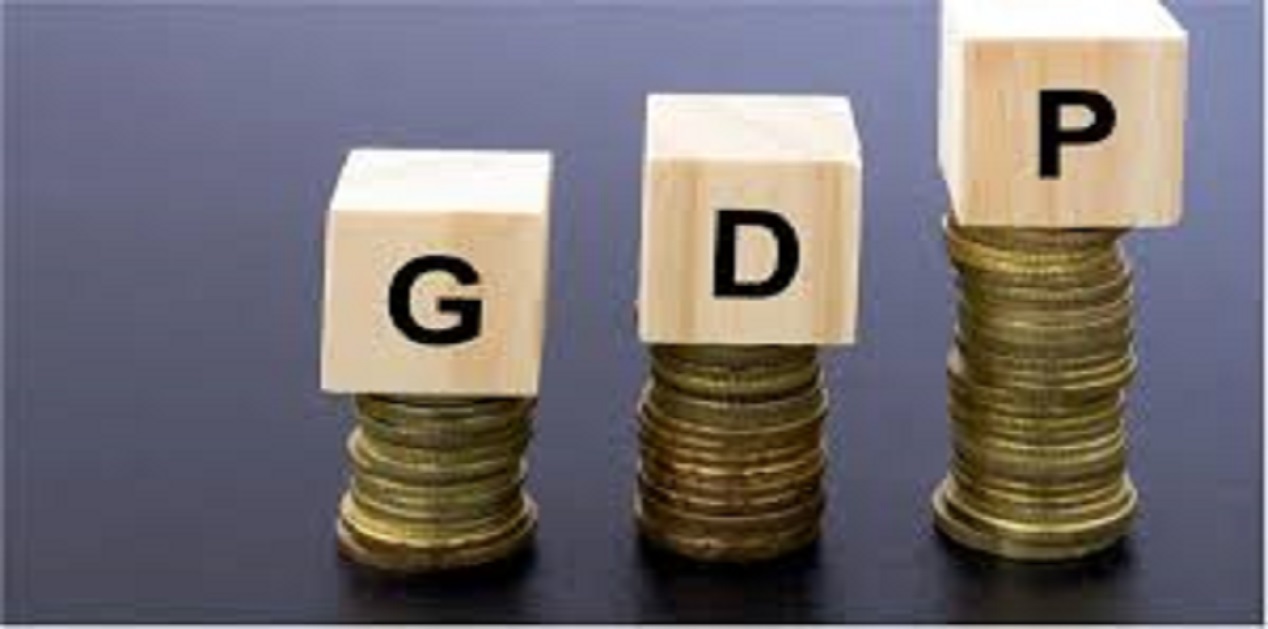Last month, a leading multinational German investment bank published a report on fiscal health of key 17 States in India.[1] The report was based on four key fiscal parameters i.e. fiscal deficit; own tax revenue, state debt levels, all as a percentage of their individual gross state domestic product; and finally the interest payment to revenue receipts.[2] The overall fiscal health scorecard threw up several expected and few interesting stats. Maharashtra was at the top. Chhattisgarh fared exceedingly well and was ranked second best in the overall fiscal health. Based on the FY24 first budget estimates, the top three states are Maharashtra, Chhattisgarh and Telangana, and the bottom three states are Bengal, Punjab, and Kerala.[3] If based on revised FY22 actual budget data, Chhattisgarh tops the list and Maharashtra, Orissa, Jharkhand and Gujarat follows. The report stated that Punjab, Bengal, Kerala, Rajasthan and Bihar are underperformers in fiscal health parameters.[4] For generating sustained GDP growth, fiscal health of State Governments and Centre along with productive capital expenditure at various levels is a must.
State Revenues and Deficit
In India, the States mobilize more than a third of total revenue but spend 60 per cent of combined government expenditure and their share of government borrowing is about 40 per cent. At the Union Government level, fiscal deficit declined from 9.1% of GDP in 2020-21 to 5.9% in 2023-24 (BE). Overall total States’ fiscal deficit was 4.1% of GDP in 2020-21. It declined to 3.24% of GDP in 2022-23 (RE). For the major States, for the year 2023-24 (BE), it is expected to be 2.9% of GDP.[5] The Fifteenth Finance Commission had proposed a glide path to bring down the fiscal deficit of Central and state governments. The recommended fiscal deficit limit for States as percentage of Gross State Domestic Product (GSDP) was 4 per cent in 2021-22, 3.5 per cent in 2022-23, and 3 per cent during 2023-26. It has also allowed an additional fiscal deficit of 0.5 per cent of GSDP upon undertaking power sector reforms.[6]
In the aftermath of pandemic, the consolidated gross fiscal deficit (GFD) of States rose to 4.1 per cent of GDP in 2020-21.[7] It was the highest GFD since 2004-05. However, the spike was followed by unexpected reversal due to higher than expected growth in both tax and non-tax revenues. The GFD was down to 2.8 per cent of GDP by 2021-22.[8] The RBI in its “Fiscal Position of the State Governments’’ dated 16 Jan 2023 noted how State Governments initiated measures to augment their revenues. It was pointed out how Kerala and Rajasthan adopted an amnesty scheme in 2020-21 to provide relief to tax payers as well as to improve revenue collections. The scheme encompassing various taxes like SGST, stamp and registration duties, motor vehicle tax and excise duties was later extended to 2022-23. Maharashtra had also introduced the scheme in 2022-23. Punjab proposed to set up a Tax Intelligence Unit to improve tax compliance under GST. Chhattisgarh’s “Karai Vardhan Cell” initiative was aimed at augmentation of revenue by analysis/ review of taxation acts/rules and tax rates on the basis of data available in the revenue collection departments. Other revenue-generating measures include Assam’s liquidation scheme for payment of arrears, Haryana’s one-time scheme for settlement of old VAT dues, and Assam and Kerala’s Green tax to discourage old vehicles. Haryana has taken measures for phased monetization of assets. States have also undertaken specific fiscal reform measures, based on the fifteenth Finance Commission’s (FC-XV) suggestions aimed at improving revenue sources.[9] In effect, the States fared well in responding to the crisis and augmenting their revenues to supplement the efforts of Union Government. Even though the State governments proactively implemented measures to augment revenue, revenue expenditure too show a sharp increase. Higher spending towards social services such as medical and public health was inevitable. Apart from that, higher allocations were provided to rural development, crop husbandry and transport and communication to reach out to the vulnerable sections amidst the crisis.
As a result of focussed actions despite economic losses due to pandemic, the fiscal health of the States bounced back in 2021-22. The RBI had noted that “Prudent fiscal management has continued into 2022-23 as reflected in budget estimates (BE).” The state of State Government Finances barring some exceptions remains right on track.
Investment Activity
India has one of the highest investment rates in the world (World Indicator Database of the World Bank). India’s capital investment/GDP ratio of 31.2 per cent in 2021 is higher than other BRICS nations.[10]
Households and private corporations together accounted for more than 70 per cent of gross capital formation in the country. In recent years, several States have taken initiatives to encourage investments in sunrise sectors. For instance, States such as Chhattisgarh, Goa, Haryana, Maharashtra, Kerala, Punjab, and Rajasthan are providing a wide range of incentives for start-ups manufacturing Electric Vehicles (EVs). Bihar, Goa, Karnataka, Uttar Pradesh and Delhi have also policies in place to nurture a start-up environment, including common infrastructural facilities, co-working spaces, research and development and testing labs, incubators and accelerator programmes and financial assistance such as one-time seed funding support, grants for repayment of interest on loans, and reimbursement of patent fees.[11]
In case of FDI, Maharashtra has been the historical outperformer over the past two decades. However, the last 2 years saw the dynamics abruptly shifting in favour of other states. Maharashtra has regularly been the No. 1 investment destination in India. With the financial capital of the country located in Mumbai, Maharashtra has enjoyed confidence of foreign investors. An Urbanised State, high GSDP growth rate, infrastructural development and ‘Ease of Doing Business’ are among the key factors which attracted investors from abroad. In Financial Year 2020-21, Maharashtra moved to second position behind Gujarat. Maharashtra with 1, 19,734 crores received less than Gujarat which received 162830 crores. In Financial 2021-22, Maharashtra was again in second position only. Maharashtra with 1, 14,964 crores is less than Rs. 1, 63,795 crore investment received by Karnataka. In 2022-23, DPIIT Data suggests that Maharashtra received highest investment of Rs.1,18,422[12] while Karnataka was at second place with 83628 crores.[13] Maharashtra thus is not just back as the No.1 investment destination among FDI investors, it is also the state least vulnerable to debt sustainability risk. In terms of Sector, computer hardware and software, automobile industry and the services sector are drawing most of the FDI flows.[14]As one of the key contributors to nation’s GDP, this bounce back by Maharashtra augurs well for the GDP figures in upcoming years. Importantly, Niti Aayog has included Mumbai Metropolitan Region as one among the 4 cities in Phase I where an economic masterplan would be prepared to create growth hubs.[15]Raising the GDP of the city from existing $140 billion to $300 billion by 2030[16] while also simultaneously creating similar growth hubs across the country will take India on the path towards its $5 trillion goal.
Capital Expenditure
Capital spending is considered as a stronger impact creator on medium-to-long-term growth.[17]In its 2019 monetary policy report, the Reserve Bank of India cited several research studies to highlight that multiplier effect. The RBI said that every rupee on capex spent by the Centre has a multiplier effect of 3.25 on output while every rupee spent on capex by States leads to an increase in output by two rupees.[18]During 2021-22 and 2022-23 (BE), there has been a sharp rise in capex growth raising the share of capital outlay in the gross fiscal deficit of the States. The quality of expenditure has improved bringing down the revenue expenditure to capital outlay (RECO) ratio for the States to a multi-year low in 2022-23.[19]In view of the higher multiplier effect of capital expenditure and to boost spending by States, the Government announced ‘Special Assistance to States for Capital Investment 2023-24' in Union Budget 2023-24. A similar scheme entitled ‘Special Assistance to States for Capital Investment for 2022-23' was also executed by the Ministry of Finance in the last financial year. Under the scheme, Capital Investment proposals of Rs. 95,147.19 crore were approved and an amount of Rs. 81,195.35 crore was released to the States in the last financial year.[20]
A study of data released by CAG for 24 states revealed that their combined revenue deficit in 2022-23 was limited to just Rs 0.5 trillion, a substantial 58 per cent lower than the amount included in the budget estimates.[21] This was caused due to better-than-budgeted revenue balances reported by several States including Karnataka, Maharashtra, Gujarat, Kerala, and Tamil Nadu. In 2022-23, capital expenditure by these states stood at Rs 6.1 trillion. This is Rs 0.9 trillion lower than the capex budgeted for that year. However, the gap has narrowed — it was Rs. 1.1-1.4 trillion during 2020-22. Most importantly, the combined capital expenditure of these states was at an all-time high.
If a large crucial State like Maharashtra is back on track with Investment activity while maintaining fiscal health. If a highly populated State like Uttar Pradesh has high capital outlay on Infrastructure.[22]If Central Government has been boosting capex expenditure by providing “Special Assistance” then the question now is not “whether” it will boost growth but “how high” will be the growth. India is already the third biggest economy in Purchasing Power Parity (PPP) terms but trails the US & China.[23] India grew at an average annual pace of 6.6 per cent in the decade to 2019-20. In 2022-23, India outperformed most other major economies clocking growth of 7.2 per cent. The Prime Minister has envisioned a goal of making India the third biggest economy. The IMF already predicts that India will grow by over 6% in next few years and the country is on track towards the Prime Minister’s goal.[24] Several State governments had exceeded expectations in raising revenues and adapting to the pandemic. An SBI report noted that credit growth continued to grow in double digits and has become broad based across sectors. [25]The Union Government’s budgeted Capex for FY24 is 33% higher than the previous year at 3.3% of GDP, and it has also announced the continuation of the 50-year interest-free loan to state governments under ‘The Scheme for Special Assistance to States for Capital Investment’ with an enhanced outlay of INR 1.3 trillion. [26] If every rupee spent towards capex by Centre and States result in multi-fold impact on GDP as studies have concluded, then the recent data of State Government’s activities, Central Government assistance and credit growthsurely indicate a high growth era in upcoming years.
Endnotes
[1] https://swarajyamag.com/economy/deutsche-bank-report-maharashtra-chhattisgarh-and-telangana-shine-in-fiscal-health-rankings-while-bengal-punjab-and-kerala-struggle
[2] https://www.ndtv.com/india-news/maharashtra-secures-top-position-in-fiscal-health-report-kerala-performs-worst-4294910
[3] https://www.ndtv.com/india-news/maharashtra-secures-top-position-in-fiscal-health-report-kerala-performs-worst-4294910
[4] https://www.ndtv.com/india-news/maharashtra-secures-top-position-in-fiscal-health-report-kerala-performs-worst-4294910
[5] https://www.thehindu.com/opinion/lead/a-macro-view-of-the-fiscal-health-of-states/article67042253.ece
[6] https://theprint.in/macrosutra/fiscal-health-check-how-indias-4-big-poll-bound-states-stack-up/1627509/
[7] https://rbi.org.in/Scripts/PublicationsView.aspx?id=21635
[8] https://rbi.org.in/Scripts/PublicationsView.aspx?id=21635
[9] https://rbi.org.in/Scripts/PublicationsView.aspx?id=21635
[10] https://rbi.org.in/Scripts/PublicationsView.aspx?id=21636
[11] https://rbi.org.in/Scripts/PublicationsView.aspx?id=21636
[12] https://dpiit.gov.in/sites/default/files/FDI_Factsheet_June_23.pdf
[13] https://dpiit.gov.in/publications/fdi-statistics
[14] https://rbi.org.in/Scripts/PublicationsView.aspx?id=21636#C13
[15] https://www.hindustantimes.com/cities/mumbai-news/niti-aayog-to-draft-economic-masterplan-for-mumbai-metropolitan-region-to-boost-gdp-to-300-billion-by-2030-101693392127891.html
[16] https://www.hindustantimes.com/cities/mumbai-news/niti-aayog-to-draft-economic-masterplan-for-mumbai-metropolitan-region-to-boost-gdp-to-300-billion-by-2030-101693392127891.html
[17] https://rbi.org.in/Scripts/PublicationsView.aspx?id=21636#S2 RBI 2019
[18] https://www.thehindubusinessline.com/data-stories/deep-dive/capital-expenditure-of-states-more-than-doubles-to-171-lakh-crore-as-of-q2/article37852483.ece
[19] https://rbi.org.in/Scripts/PublicationsView.aspx?id=21636#S2
[20] https://pib.gov.in/PressReleaseIframePage.aspx?PRID=1935378
[21] https://indianexpress.com/article/opinion/columns/mapping-the-spending-8834797/
[22] https://rbi.org.in/Scripts/PublicationsView.aspx?id=21636#S2
[23] https://www.livemint.com/economy/charting-a-realistic-path-of-india-s-growth-11693913790417.html
[24] https://www.livemint.com/economy/charting-a-realistic-path-of-india-s-growth-11693913790417.html
[25] https://www.livemint.com/economy/indias-gdp-growth-in-june-quarter-to-be-at-8-3-higher-than-rbis-estimate-sbi-economists-11692872291702.html
[26] https://indbiz.gov.in/states-capex-up-by-12-in-april-feb-23-govt/
(The paper is the author’s individual scholastic articulation. The author certifies that the article/paper is original in content, unpublished and it has not been submitted for publication/web upload elsewhere, and that the facts and figures quoted are duly referenced, as needed, and are believed to be correct). (The paper does not necessarily represent the organisational stance... More >>










Post new comment